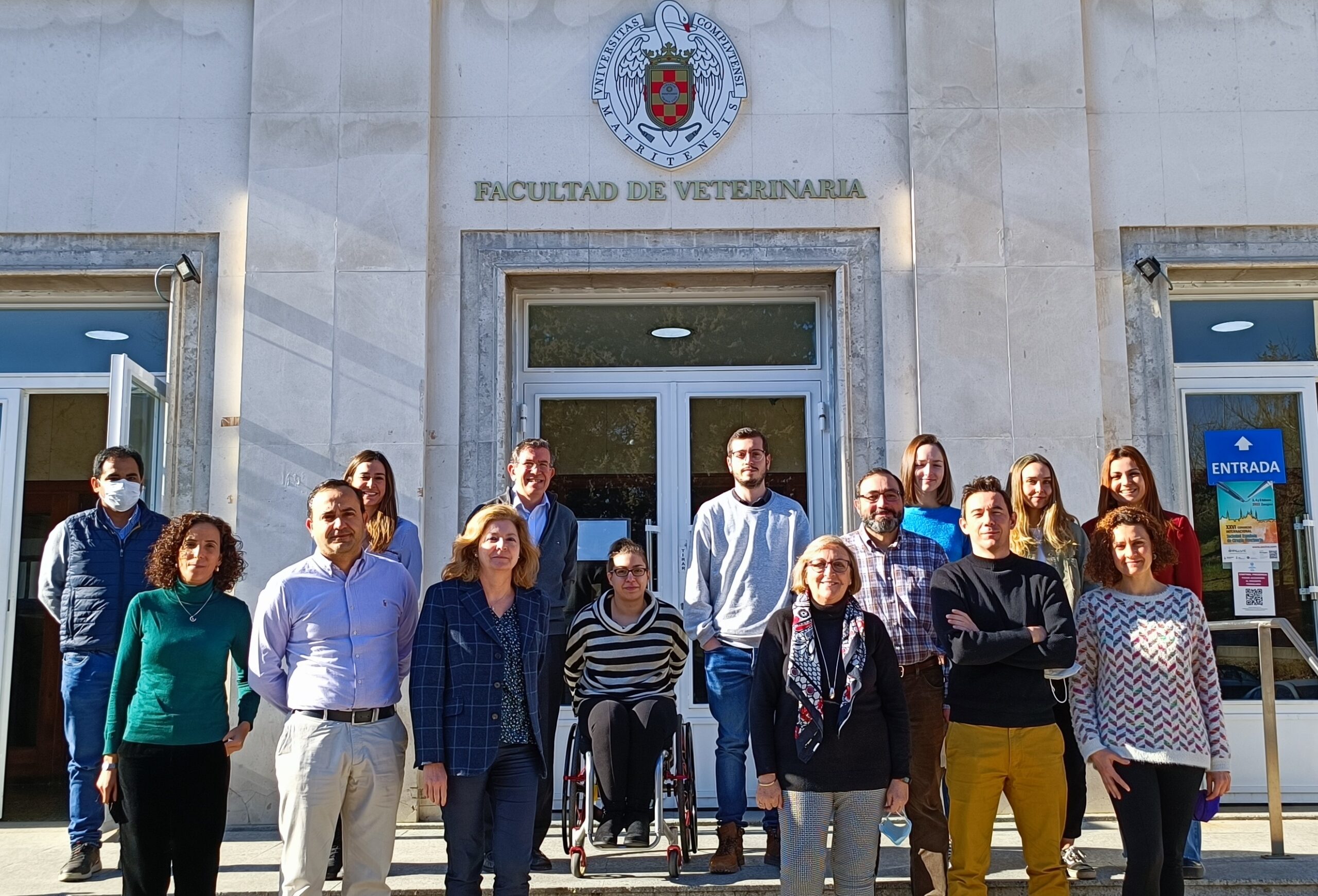
Tel. +34 913 94 38 94
Tel. +34 913 94 38 91
Faculty of Veterinary Medicine, UCM
Pl. de Ramón y Cajal, s/n, 28040 Madrid

The Neurotransmission and Neuromodulation Group is a basic research group composed of professors from the Departments of Biochemistry and Molecular Biology at the Faculties of Veterinary Medicine and Pharmacy, the Department of Pharmacology and Toxicology at the Faculty of Veterinary Medicine, and the Department of Physiology at the Faculty of Medicine of UCM, as well as predoctoral and postdoctoral researchers. One of the main focuses of their research is to understand the involvement of purinergic signaling in the development of the nervous system and in maintaining its functions. Using different experimental approaches, they have confirmed that nucleotide receptors, acting in coordination with other components of the purinergic system, participate in the process of neuronal differentiation and in the formation of new neurons in adults. The receptors present in neurons and glial cells are also involved in maintaining neuronal function by regulating the expression of pro-survival genes in situations of neuronal damage. Recent research has helped clarify the dual role of the P2X7 receptor in the nervous system. The levels of expression and stimulation of this receptor are crucial for inducing processes as diverse as proliferation or cell death. The function of this receptor is altered in murine models of Alzheimer’s disease, epilepsy, and Parkinson’s disease. Recent studies suggest it could be a potential biomarker. Other research aims to analyze the involvement of the purinergic system and other neurotransmitter systems in neuropathic pain.
Another primary focus of the group is the study of basic mechanisms of excitability, synaptic transmission, plasticity, and the molecular mechanisms involved in their regulation, with special attention to metabotropic glutamate receptors. Using various experimental approaches, it has been shown that different synaptic alterations are the cause of numerous pathologies, one of which is Fragile X syndrome, the second most common cause of intellectual disability in humans, caused by the absence of the FMR protein. In a Fragile X animal model, a loss of plasticity mechanisms in different types of synapses has been evidenced, and the molecular alterations, as well as possible biomarkers, are being analyzed. On the other hand, the imbalance between excitatory and inhibitory transmission is the cause of epilepsy, and understanding the regulation of excitatory and inhibitory synaptic transmission is essential to finding effective treatments. Other research is directed towards studying mechanisms of neuronal death and neuroprotection in models of neurovascular disease (cerebral ischemia) and neurodegenerative diseases.
Dr. ESMERILDA GARCÍA DELICADO
Degree (1982) and PhD in Biology with Extraordinary Prize (1987) from the University of Murcia. She is currently Professor of Biochemistry and Molecular Biology at the Complutense University of Madrid.
She started her research career as a student intern at the Interfaculty Department of Biochemistry of the University of Murcia, where she completed her thesis under the supervision of Dr. Juan Carmelo Gómez Fernández, and most of the experimental work for her doctoral thesis, thanks to a grant from the FIS. In 1986 she moved to the Faculty of Veterinary Medicine of the Complutense University of Madrid together with her thesis supervisor, Dr. Mª Teresa Miras Portugal, where she has developed her entire teaching and research career.
Her research is focused on the study of different stages of extracellular nucleotide-mediated signalling. She contributed to the characterisation of the nucleoside transporter in different neural models, a key step in the recovery of intracellular levels of adenosine, the end product of extracellular nucleotide hydrolysis. Studies in chromaffin cells showed that the facilitated diffusion transporter (SLC29) was regulated by phosphorylation-dephosphorylation processes as was later demonstrated for other neurotransmitter transporters. In recent years, the research line has mainly focused on the study of nucleotide receptors and their implications in neuroprotection processes in order to identify new therapeutic targets.
She has participated in more than 30 national and European research projects.
Dr. MAGDALENA TORRES MOLINA
Bachelor’s degree (1984) and Ph.D. in Chemical Sciences (1987), with a specialization in Biochemistry, from the University of Murcia (UMU). Professor of Biochemistry and Molecular Biology at the Complutense University of Madrid (UCM) since 2010.
Magdalena Torres Molina has been a Professor of Biochemistry and Molecular Biology at UCM since 2010. Her scientific career began in 1982 as a fourth-year Biochemistry student under the supervision of Professor María Teresa Miras in the Department of Biochemistry at the University of Murcia. She has published 78 scientific articles and 5 book chapters, and has presented over 150 communications at scientific conferences. She has been invited as a speaker to 8 conferences (7 international and 1 national). She performed short-term stays at various research centers as part of collaborative projects, including the Institut des Neurosciences Cellulaires et Intégratives (Strasbourg, France), Goethe University (Frankfurt am Main, Germany), and the NIH (Bethesda, USA). She also undertook a longer research stay at the University of Virginia (Charlottesville, USA), where she initiated a research line that she continued upon returning to Spain, marking the beginning of her role as a group leader. She has been the principal investigator on 20 research projects with stable funding from various ministries and agencies since 1994 and has been a member of the research team for another 25 projects. She serves as a reviewer for numerous scientific journals and as project evaluator for different agencies. She has supervised 9 doctoral theses (one not presented), most of them as the sole advisor. Additionally, she has overseen various degree and master students projects and has been an academic tutor for several theses and numerous TFMs within the Master’s program in Biochemistry, Molecular Biology, and Biomedicine (BBMB) and the BBMB Doctoral Program. Throughout her scientific career, she has worked on various research lines, though always within the field of Neurobiology. Research periods granted: 6 (most recent period: 2015-2020, notification date June 2, 2021). h-index: 30/33 (Scopus/Google Scholar). Total citations: 3187 (Google Scholar); ORCID: 0000-0002-3893-8569; ResearchID: E-6150-2017; Scopus author ID: 7402581232; Google Scholar: 9D3NI3OAAAAJ.